Why was Filippo Ganna's Tirreno-Adriatico team car stacked with spare bikes?
Aero exploit gives Ganna and Evenepoel marginal gains in time trial opener
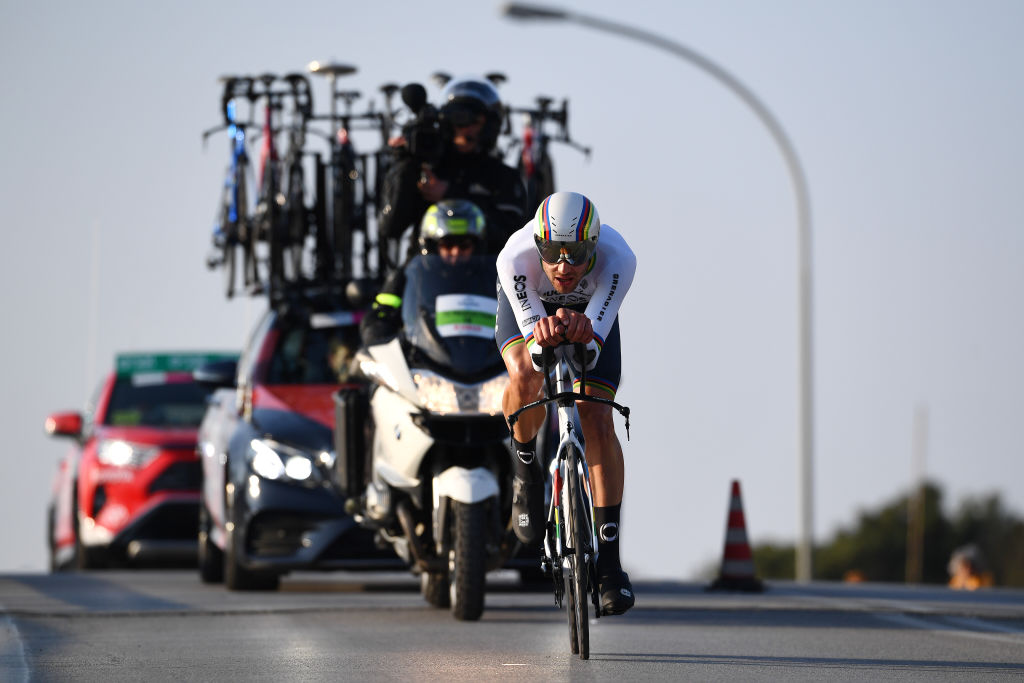
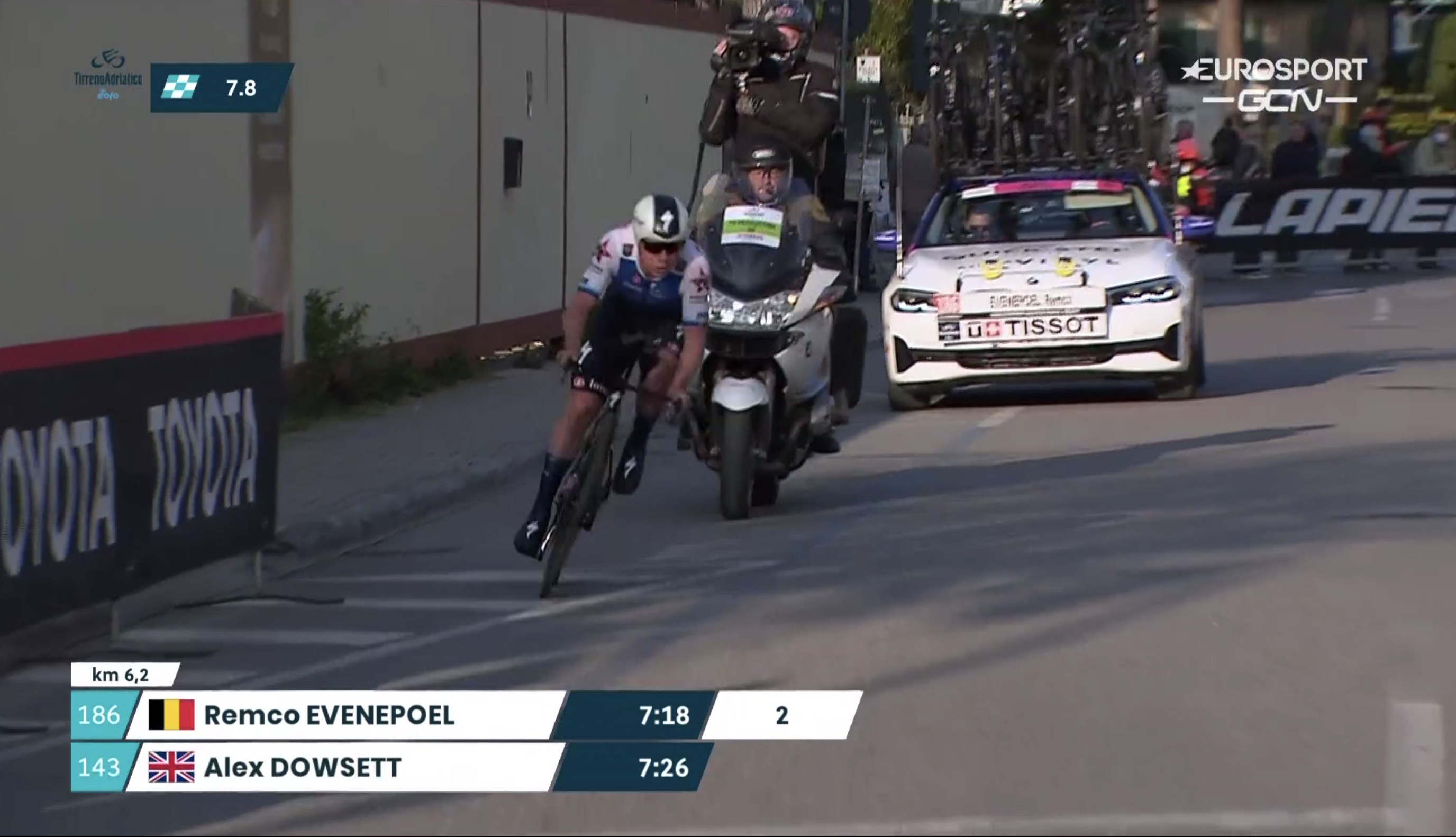
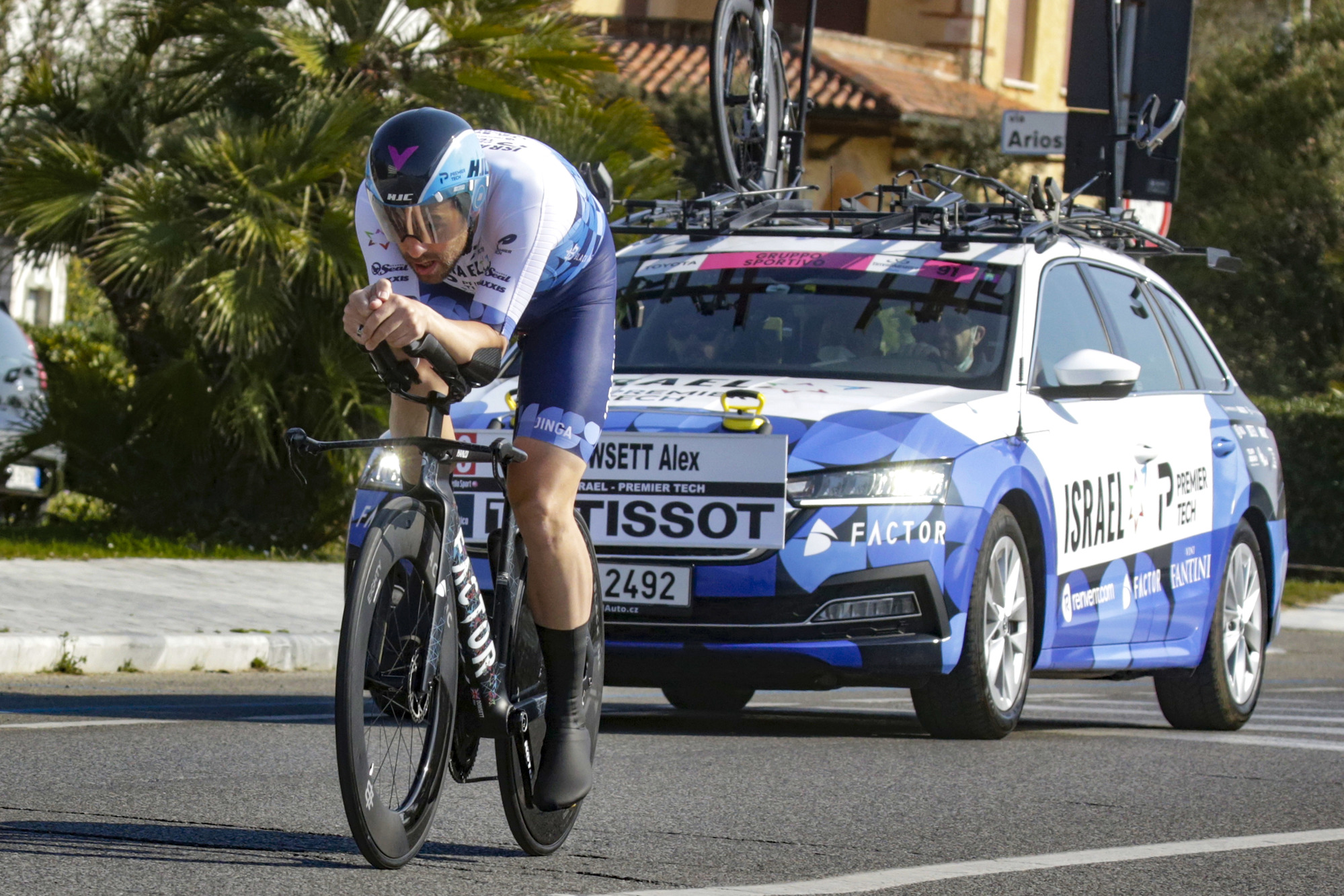

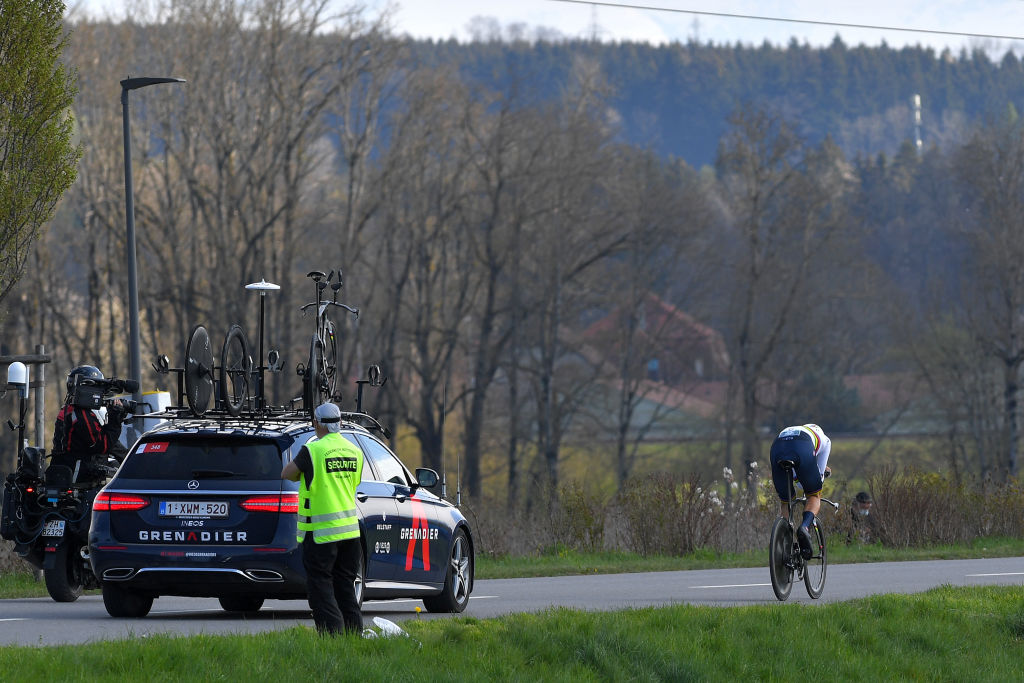

Monday's opening time trial at Tirreno-Adriatico, a no-frills, pan-flat run up and down Lido di Camaiore's coastal road, passed largely without surprise on the results sheet. World time trial champion Filippo Ganna romped to victory, finishing 11 seconds clear of Remco Evenepoel and a further seven ahead of Tadej Pogačar, the week's GC battle left poised in the Italian's wake.
However, looking beyond the power and precision of the Italian's 17th career time trial victory, some eagle-eyed viewers spotted something amiss – an abundance of spare bikes stacked atop the team car following him during the stage.
Ganna's Ineos Grenadiers team weren't preparing for a Michael Rasmussen-esque calamity on the 13.9-kilometre course, though – instead they were simply optimising their star rider's aerodynamics.
QuickStep-AlphaVinyl did the same in the car behind Evenepoel, too, while the car following fourth-placed Kasper Asgreen had five bikes on the roof. Meanwhile, the cars of Pogačar and fifth-placed Dowsett held only a standard single spare bike.
The exploit is not against UCI regulations – which don't legislate for the number of spare bikes atop a team car – and is also seemingly not a brand new one conjured up by Ineos' newly added aero expert Dan Bigham. Cyclingnews has pored through photo and video archives and found that, since the final stage of the 2021 Giro d'Italia onwards, Ganna has made the switch from one or two spare bikes to the plethora seen on Monday.
In fact, he has had a bike-laden team car following him at three out of the four time trials he has raced for Ineos since – at the Etoile de Bessèges, the Tour de la Provence, and on Monday.
Ganna storms to victory in Tirreno-Adriatico time trial opener
Evenepoel: My only hope at Tirreno-Adriatico is if Pogacar has a really bad day
What was stuffed down Great Britain's skinsuits in the Mixed Relay Time Trial?
Filippo Ganna takes aim at the Classics, Tour de France and Hour Record in 2022
Ganna has, of course, won each of those stages – but what kind of gains can time trialists make from being followed by a car with bikes packed on the roof rack? And how does the science of it all work?
The latest race content, interviews, features, reviews and expert buying guides, direct to your inbox!
Cyclingnews spoke to Richard Kelso – Adjunct Associate Professor at the University of Adelaide with specialities in fluid mechanics, aerodynamics, and sports engineering – to find out.
Kelso, whose aero expertise has seen him collaborate with AusCycling's track team since 2008 and design several helmets with Kask and Scott, told Cyclingnews that – in addition to the well-known slipstream effect gained by following a vehicle – having a vehicle follow a rider also gives an aerodynamic benefit.
"I think the way it's normally explained is that any object moving through the air pushes air with it," Kelso said. "The pressure distribution around the object – in this case, the car – leads to the air immediately in front being pushed forwards slightly.
"So, it means that the larger vehicle behind or the vehicle behind the cyclist will actually be pushing the air ahead with the cyclist, so that the airflow speed around the cyclist will be smaller. It is only small but it's enough [to make a difference]."
Like any object moving through the air, riders and follow cars create pressure fields, with a high-pressure area at the front and a low-pressure area at the rear. The difference between the two is what creates drag.
Logically, then, with one object (in this case, a car following at the UCI-regulated 10-metre gap during time trials) following another, the follow car and its leading high-pressure zone will then have an effect on the rider's rear low-pressure zone, thus reducing that drag.
"Depending on how far the cyclist is ahead, the cyclist will be sitting in that zone where the air is being pushed ahead with the car," explained Kelso.
"The maximum effect is right in front of the car, where the air is essentially moving with the car, and the minimum effect is at an infinite distance ahead of the car. So, at 10 metres ahead there's a very small favourable wind moving with the cyclist, but it's still enough to produce that reduction in drag."
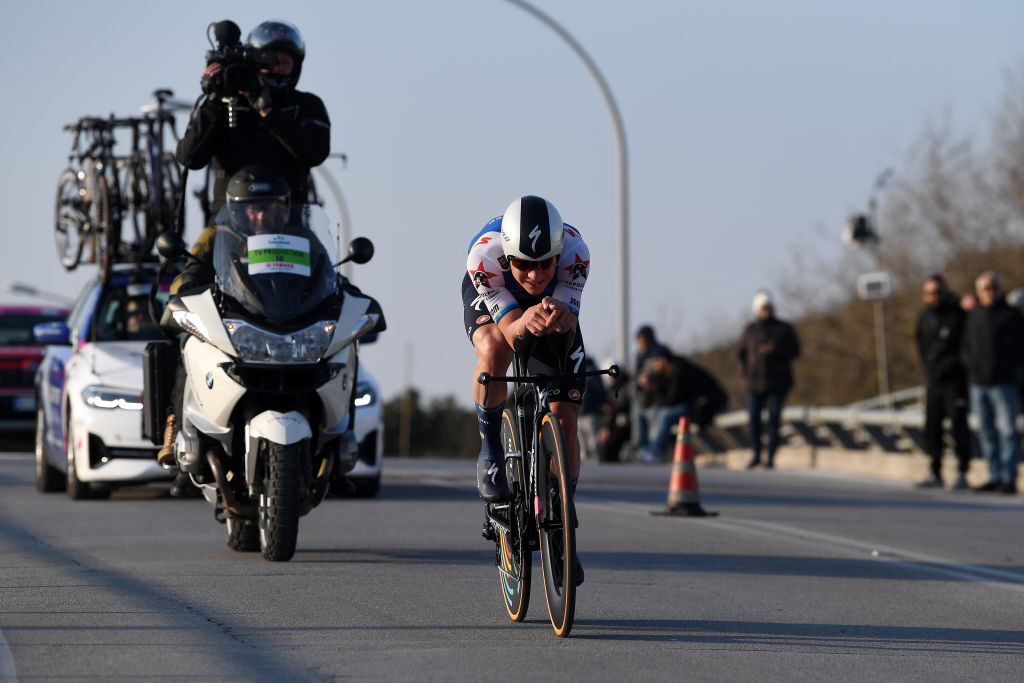
Kelso went on to quote Belgian professor Bert Blocken, who has done much of the small amount of research into this very subject, when explaining what benefits a follow car at 10 metres would have on a rider.
"He found that, for a car following at 10 metres, the drag reduction is about 0.23 per cent on drag coefficient, and that translates to 3.9 seconds over 50 kilometres. So, for this 14-kilometre circuit it's roughly one second."
That second, then, is what the Pogačars and Dowsetts of the peloton would potentially have gained in Lido di Camaiore. Though the 'wall' of bikes on top of the follow cars behind Ganna and Evenepoel will have only created an additional beneficial effect, said Kelso.
"With the bikes stacked up on the top, the vehicle effectively looks more like a box truck, and in broad terms it's virtually like having a vehicle of double the height. If the bikes are tightly packed enough and all the gaps between them are small enough, it'll be a significant blockage to the airflow.
"Basically, if you want to get the maximum effect, you'd want something with the aerodynamics and shape of a brick. A flat front, sharp edges, that kind of thing in order to maximise the drag of the following vehicle, because that will have the maximum effect on the air ahead." Kelso added, in response to Israel-Premier Tech performance coach Greg Henderson's joke that his team would use a team bus to follow Dowsett in future.
Kelso concluded that, for Ganna and Evenepoel, the effect of having their follow cars stacked with bikes would likely have given them an added second of time, compared to their rivals.
"I would double those times given all the bikes on top," Kelso said. "You might be looking at maybe a couple of seconds. That's if the car is 10 metres behind for the whole distance.
"I think it's pretty unlikely that it would have made a difference to those results, but then of course nobody knows what the results are going to be until the race is done."
Ineos' and QuickStep's idea gained their riders a small advantage then, and any time gain is a win, even if it wasn't necessarily a result-altering one. Nevertheless, their ploy has given us all something else to look out for in future time trials.
In the short term, though, Evenepoel may just end up very grateful for that extra second or so come the end of Tirreno-Adriatico.
Ineos love Ganna. In the time trial they give him a choice of 10 bikes, incase he needed one in a different size. Or did the team car want to get off for an early dart post Race?!?Nothing to do with aero at all. pic.twitter.com/knDi8EF2f5March 7, 2022

Dani Ostanek is Senior News Writer at Cyclingnews, having joined in 2017 as a freelance contributor and later being hired full-time. Before joining the team, she had written for numerous major publications in the cycling world, including CyclingWeekly and Rouleur. She writes and edits at Cyclingnews as well as running newsletter, social media, and how to watch campaigns.